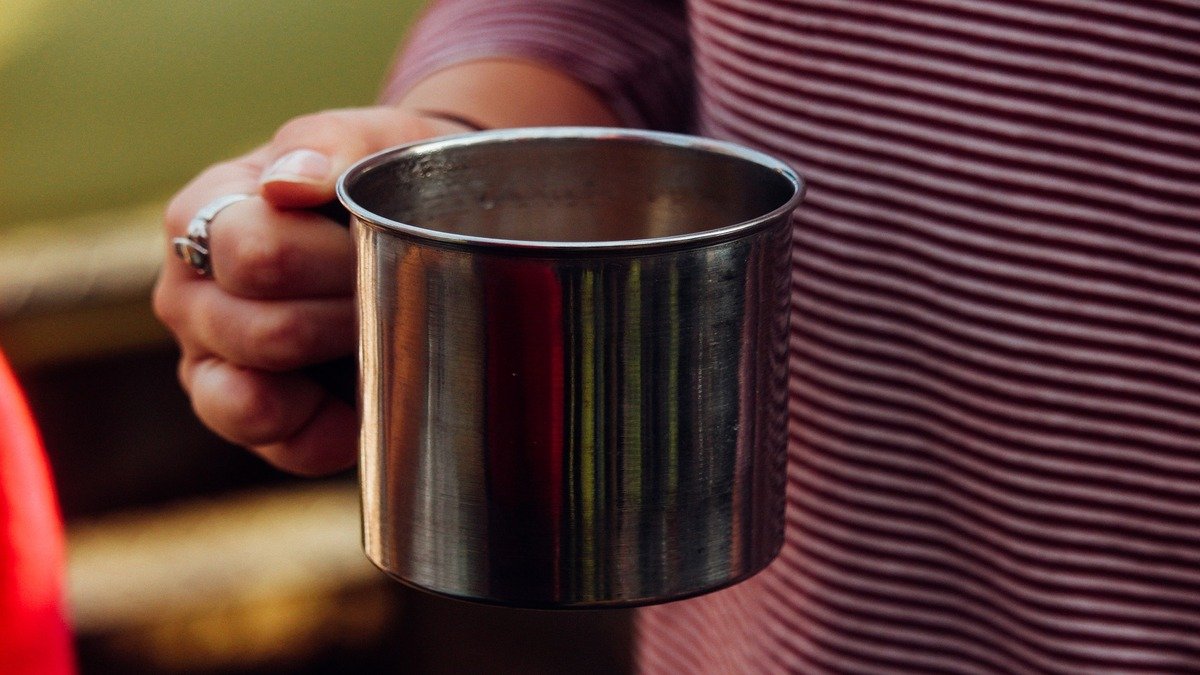How to Get Mold Out of Your Metal Cups

If you’re always on the go, you probably have a reusable mug that you carry around with you. And chances are that it’s metallic.
After all, these mugs are durable and can maintain your drink’s temperature. But how are you supposed to get mold out of metal cups? Well, that’s what we’re going to talk about today.
Does mold grow on stainless steel?
While mold can grow on stainless steel, it’s difficult for it to do so. This is because mold usually thrives on wet, porous, and dirty surfaces.
That’s why it’s common to find mold on old wet wood surfaces. However, mold can still grow on metal surfaces like stainless steel if they are really dirty.
Can you get sick from mold in metal cups?
Yes, you can get sick from mold in a metal cup. While your stomach contains acid that can fight small amounts of mold, moderate to high amounts can cause symptoms like nausea, abdominal cramps, and diarrhea.
If your body’s immune system is weak though, you can have more serious symptoms. However, most people who accidentally ingest small amounts of mold don’t experience any symptoms of sickness.
Does mold stay on metal cups?
Since metal is synthetic and non-porous, mold doesn’t stick on it as much as it would on other surfaces. Fortunately, this makes it easy to clean mold off of metal.
How do you get mold out of stainless steel metal cups?
If you want to get mold out of your stainless steel cups, follow the steps below:
1. Wear some protective gear
Before you handle anything with mold, wear rubber gloves and a mask so that you can avoid inhalation, ingestion, and further spread. If you feel like you need some extra protection, you can also wear pants, a long-sleeved shirt, and some goggles.
2. Pour some water onto the mold
To keep more spores from being released into the atmosphere, pour some water onto the mold that you want to remove.
3. Scrub
Once the mold is wet, use some arm soapy water to scrub the mold off the cup. When dealing with non-porous surfaces like stainless steel, soapy water is usually enough to eradicate mold.
4. Disinfect
To get rid of any remaining mold spores, you’ll need to disinfect your stainless steel cup.
- To do so, just add ¼ to ½ cup of bleach to a gallon of water and apply the mixture to the clean cup, particularly around the area where the mold was located.
- Let the bleach sit there for at least 15 minutes and then rinse the cup thoroughly.
- Afterward, airdry the cup or aim at it with a fan/dehumidifier.
What kills mold on metal cups?
Apart from detergent and bleach, there are other products that you can use to kill mold and their spores on metal. These include vinegar, baking soda, borax, tea tree oil, ammonia, grapefruit seed extract, and hydrogen peroxide.
Beyond these, there are also commercial products that have been designed to kill mold and even prevent future mold growth. A popular one is the Concrobium Mold Control Spray.
How do you prevent mold on metal and in metal cups?
If you want to keep your metal surfaces and cups mold-free, do the following:
1. Keep them clean
Mold usually needs dirt to start growing – that’s why it always grows in the grimiest of places. So if you want to avoid this pesky fungus, keep your metal cups and surfaces clean.
2. Keep them dry
Another thing that molds love is moisture. That’s why it’s important to always dry your metal cups and surfaces, especially before storage.
Also, ensure you dry them in a clean and dry place. To do this, you can even heat up some rooms or areas in your house and then open the windows to let out the resulting moisture-rich air.
To take things up a notch, you can even use chemicals that absorb water. These include silica gel, anhydrous calcium sulfate, and activated alumina.
3. Use an air conditioner or dehumidifier
These systems usually remove water from the air by taking it up, cooling it, and circulating it. Remember, cool air usually holds less water than warm air.
Final thoughts
If there’s one thing that metal cups and surfaces have going for them, it’s the fact that they don’t easily grow mold. And even when they do, it’s usually easy to deal with. Ultimately, you won’t have much to worry about if you just keep your metal cups/surfaces clean and dry.
